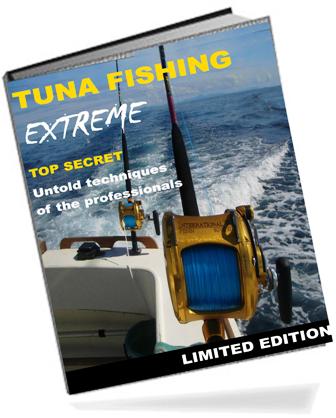The meat of the yellowfin is light in color compared to that of most other tuna, with the exception of the albacore and the dogtooth tuna, which have white meat.
Other Names
Allison tuna, albacore, autumn albacore, yellow-finned albacore; French: albacore, thon à nageoires jaunes; Hawaiian: ahi, ahimalai-lena; Italian: albacore, tonno albacora; Japanese: kihada, kiwade, kiwada maguro; Portuguese: alba-cora, atum amarello; Spanish: atún de aleta amarilla, atún de Allison, rabil.Identification
This is probably the most colorful of all the tuna. The back is blue-black, fading to silver on the lower flanks and the belly. A golden yellow or iridescent blue stripe runs from each eye to the tail, although this is not always prominent.All the fins and finlets are golden yellow, although in some very large specimens the elongated dorsal and the anal fins may be silver edged with yellow. The finlets have black edges. The belly frequently shows as many as 20 vertical rows of whitish spots. Many large yellowfins become particularly distinguishable, as they grow very long second dorsal and anal fins.
 |
| Yellowfin Tuna (Thunnus albacares) |
Overall, the body shape is streamlined and more slender than that of the bluefin or the bigeye tuna. The eyes and the head are comparatively small. Just as the albacore has characteristically overextended pectoral fins, the yellowfin has overextended second dorsal and anal fins that may reach more than halfway back to the tail base in some large specimens.
In smaller specimens under about 60 pounds, and in some very large specimens as well, this may not be an accurate distinguishing factor, as the fins do not appear to be as long in all specimens. The pectoral fins in adults reach to the origin of the second dorsal fin but never beyond the second dorsal fin to the finlets, as in the albacore.
The bigeye tuna and the blackfin tuna may have pectoral fins similar in length to those of the yellowfin. The yellowfin can be distinguished from the blackfin by the black margins on its finlets; blackfin tuna, like albacore, have white margins on the finlets.
The yellowfin can be distinguished from the bigeye tuna by the lack of striations on the ventral surface of the liver. The yellowfin tuna has a total of 25 to 35 gill rakers on the first arch, and it has an air bladder, as do all species of Thunnus except the longtail tuna. There is no white, trailing margin on the tail.
Previously, large yellowfins with long second dorsal and anal fins were called Allison tuna or long-finned yellowfin tuna, and the smaller specimens were called short-finned yellowfin tuna, in the mistaken belief that they were a separate species. It is now the general consensus that there is only one species of yellowfin tuna.
Size/Age
Yellowfins are commonly caught under 100 pounds in size but may grow to more than 400 pounds. Their maximum length is 75 inches, and the all-tackle world record is a 388-pound, 12-ounce Mexican fish.Life history/Behavior
Yellowfins are fairly abundant in tropical waters. Young fish are known to form large schools near the surface. Adults inhabit fairly deep water but also live near the surface, and they are caught close to the surface by anglers.They often mix with other species, especially skipjack and bigeye tuna. Yellowfin are sexually mature when they reach a length of approximately 40 inches, and they spawn throughout the year in the core areas of their distribution, with peaks occurring in the summer months.
 |
| Tuna fishing guide |
Food
The diet depends largely on local abundance and includes flyingfish, other small fish, squid, and crustaceansDistribution/Habitat
This species occurs worldwide in deep, warm, temperate oceanic waters. It is both pelagic and seasonally migratory but has been known to come fairly close to shore where there are warm currents.The largest yellowfins have been encountered by long-range party boats fishing in the Revillagigedo Islands off the coast of Baja California, Mexico. Specimens exceeding 200 pounds are common during many winter trips, and some in the 300-plus-pound class are boated.
